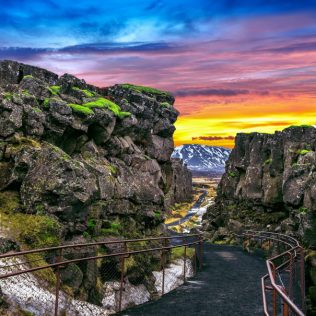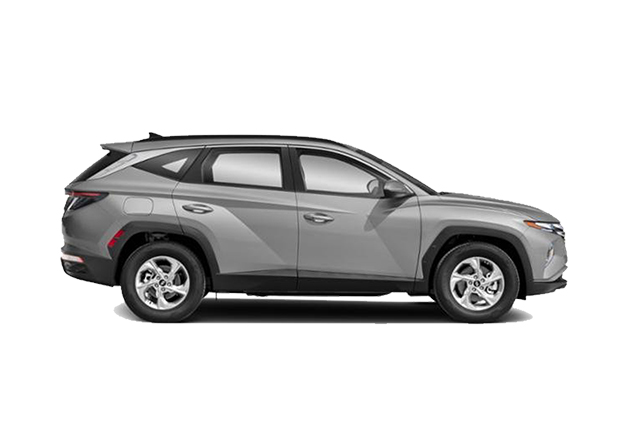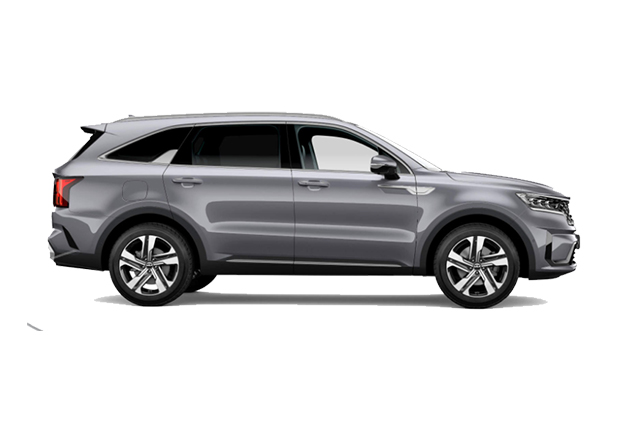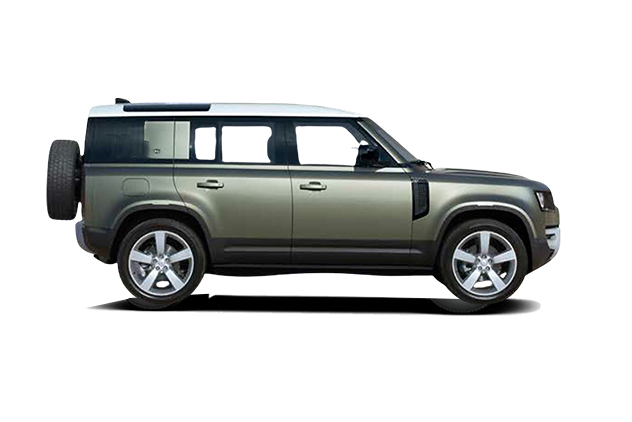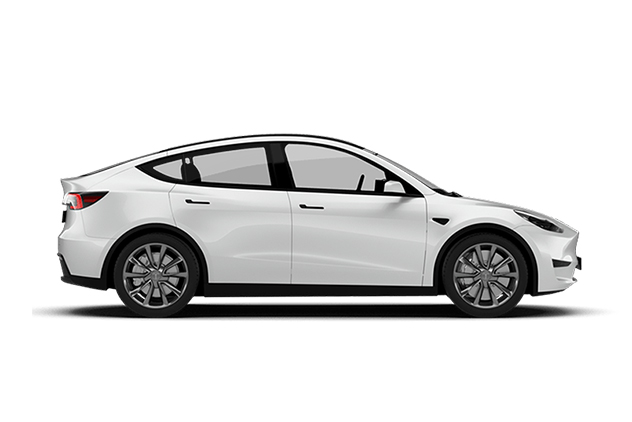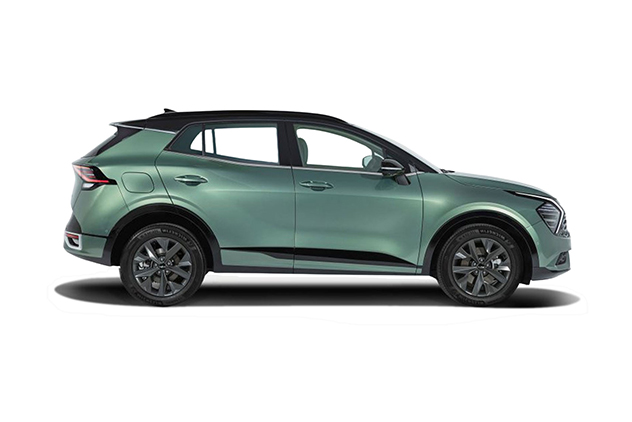Iceland is a unique destination that is renowned for its dramatic landscapes, stunning Iceland waterfalls, and natural hot springs. However, one of the most fascinating aspects of Iceland is its geology.
Iceland is located on the Mid-Atlantic Ridge, where two tectonic plates – the North American tectonic plate and the Eurasian plate – meet and diverge, making it one of the few places on Earth where you can see the effects of plate tectonics above ground.
In this travel guide, we will explore the geology of Iceland and answer some of the most common questions, such as what continent Iceland is located on and where you can see the tectonic plates in Iceland. Whether you’re a geology enthusiast or simply looking for an unforgettable travel experience, Iceland’s unique geological features are sure to leave you in awe.
- Related links: Rent a car in Iceland; More about Icelandic nature
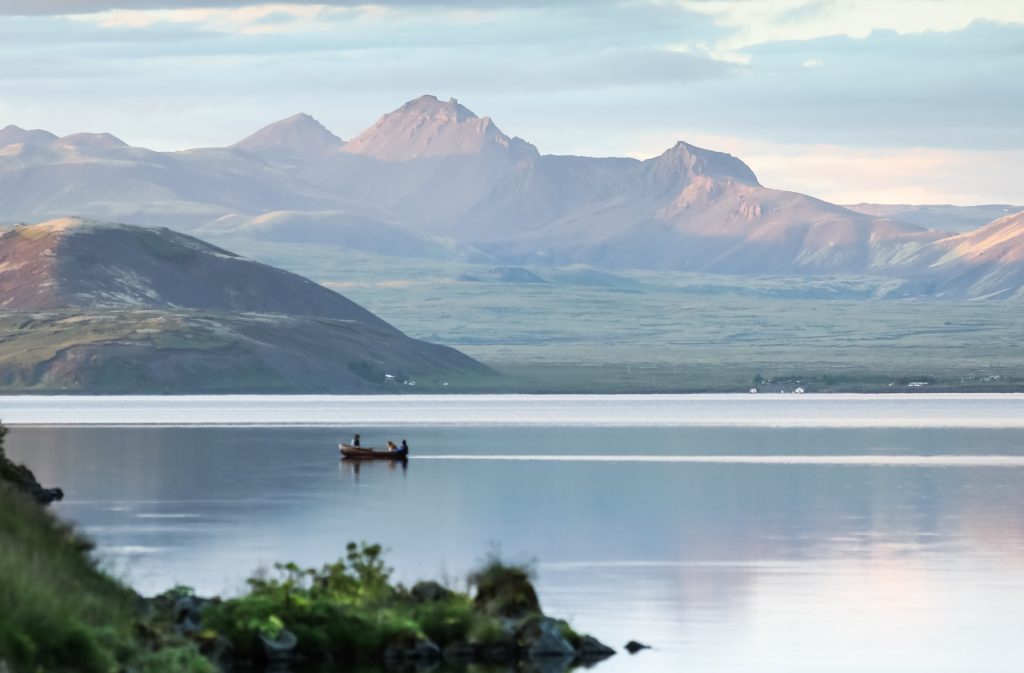
What continent is Iceland on?
Iceland is officially considered part of Europe, yet from a geographic standpoint, it straddles both the North American and European continents. This is due to its location along the Mid-Atlantic Ridge, which divides the country between two tectonic plates. As a result, Iceland’s western portion lies on the North American plate while the eastern part lies on the Eurasian plate, technically placing Iceland on both continents.
Iceland is actually in Europe, not North America
Although technically Iceland sits on two different continents, Iceland is actually one of the European countries. While it’s not a member of the European Union (EU), Iceland belongs to the European Economic Area (EEA), meaning that Icelanders can live and work across Europe in the same way as EU nationals.
Iceland has also been a member state of the Schengen Area since 2001. Politically, culturally and historically, Iceland has always been linked with Europe. It’s one of the five Nordic countries alongside Norway, Finland, Denmark and Sweden. Iceland actually used to be part of the Kingdom of Denmark until it became independent in 1944.
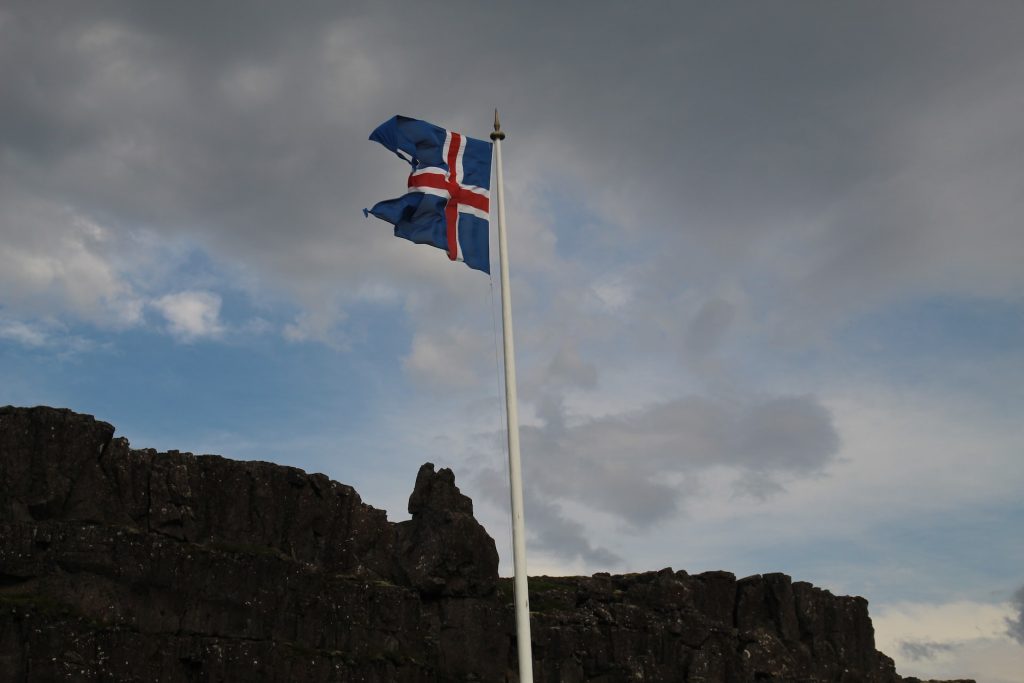
The two tectonic plates in Iceland
Tectonic plates are the huge slabs of solid rock that comprise the Earth’s crust and the top portions of the mantle. These slabs of rock sit on top of a layer of magma, floating like boats on the ocean, which is why they are always moving.
Large faults and ridges make up the edges of these plates, and when they clash together, it can cause earthquakes or send a wave of energy that creates Iceland volcanoes and volcanic eruptions. Even there are no active volcanoes eruptions in Iceland, but it is likely that we might have another vocalic eruption soon.
Iceland is located at the meeting point of two of the world’s largest tectonic plates, the North American tectonic plate and the Euroasian plate. It was because of their unstable interactions that Iceland was formed in the first place, and why the country is home to well over 100 volcanoes.
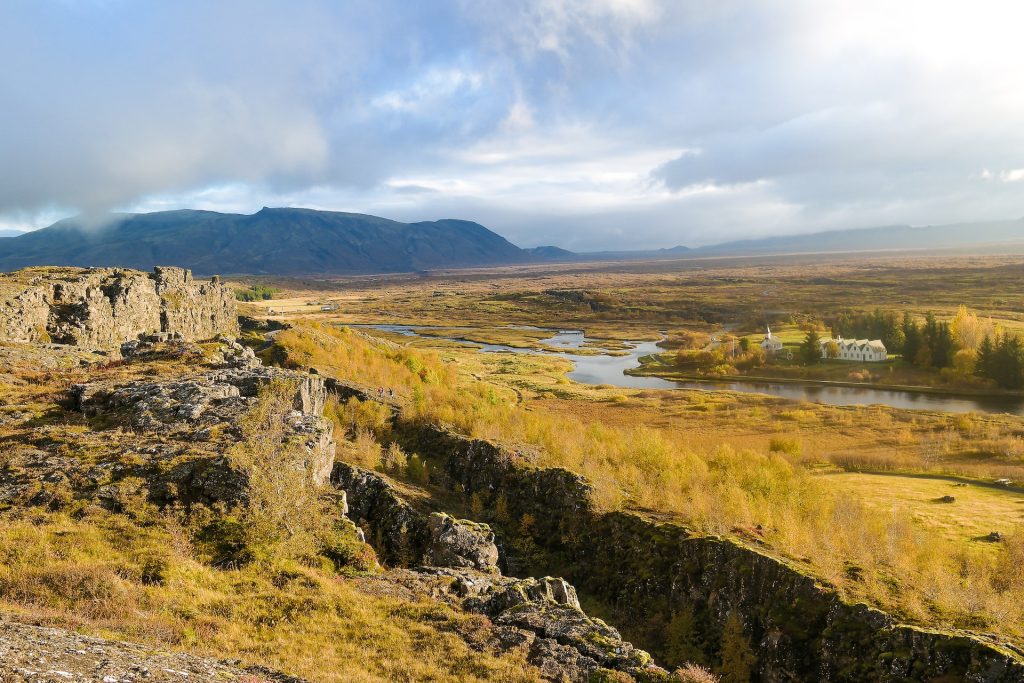
Scientists predict that Iceland began to form about 60 million years ago when the North American and Eurasian tectonic plates began to move apart, which allowed molten hot lava to come to the surface. And when that lava cooled, it created the landmass that is now Iceland.
But that wasn’t the only time that the plates shifted. Since then, frequent shifts in the plates have created many more volcanoes and geothermal activity in Iceland, and this is why the hot springs in Iceland have a continuous supply of hot water bubbling up from the earth’s crust.
Mid-Atlantic ridge in Iceland
The Mid-Atlantic ridge extends across the planet, from the Arctic Ocean directly south through the middle of the Atlantic Ocean to the southern tip of Africa (hence the name). It separates the South American tectonic plates and African tectonic plates, which are located in the South Atlantic Ocean. Along this ridge, the North American and Eurasian tectonic plates are constantly moving, pulled apart as they shift.
While most of the Mid-Atlantic ridge is located underwater, in Iceland, it rises above sea level. It’s one of the only places in the entire world where people can see the rift zone from land. The ridge runs diagonally across Iceland from the southwest to the northeast, and its presence is evident in the country’s unique geological features, including volcanoes, hot springs, and geysers. Some of the most famous volcanoes in Iceland, such as Eyjafjallajökull and Hekla, are located along the ridge.
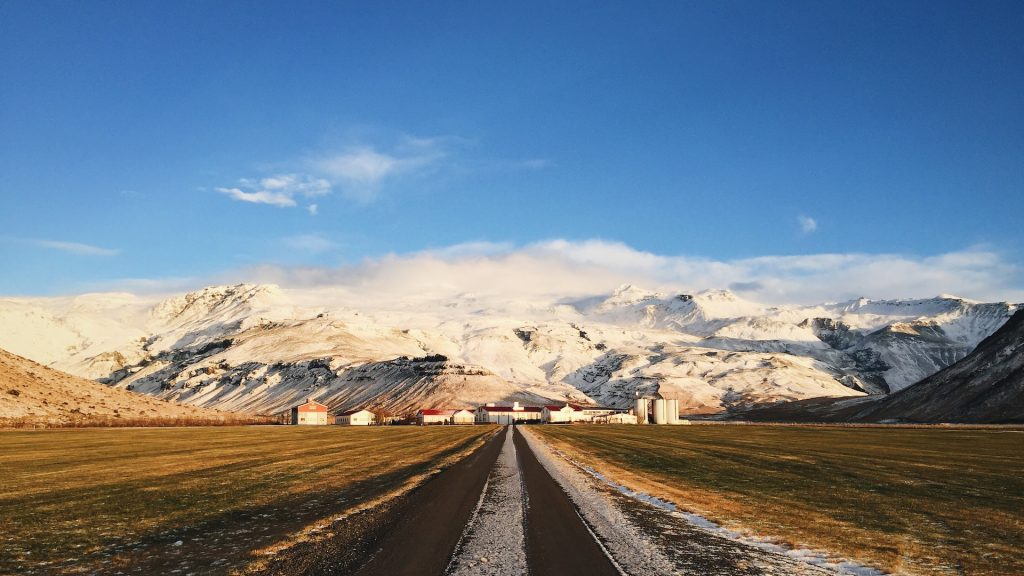
Tectonic movements in Iceland
Tectonic plates are always shifting. Some plates are rubbing together, while others are pulling apart. Iceland’s location on The Mid-Atlantic ridge is known as a divergent boundary, which means the plates are pulling apart. The Mid-Atlantic ridge continues to spread apart, or you can also call it tectonic plates moveing or tectonic plates drifted, at a rate of about 2cm per year.
But that doesn’t mean that Iceland is doomed to split in half. Along the ridge, mantle plumes bring up mantle material, aka magma, from deep in the Earth. This magma is then fed into the crust, which forms solid rock and holds the country together.
The tension created by the movement of the plates leads to frequent earthquakes, some of which can be quite strong. Volcanic activity in Iceland is directly related to the movement of the tectonic plates. As magma rises to the surface, it creates new land and forms volcanic landscapes such as mountains, lava fields, and geothermal areas. The movement of the tectonic plates also creates geothermal energy, which is an important source of power in Iceland.
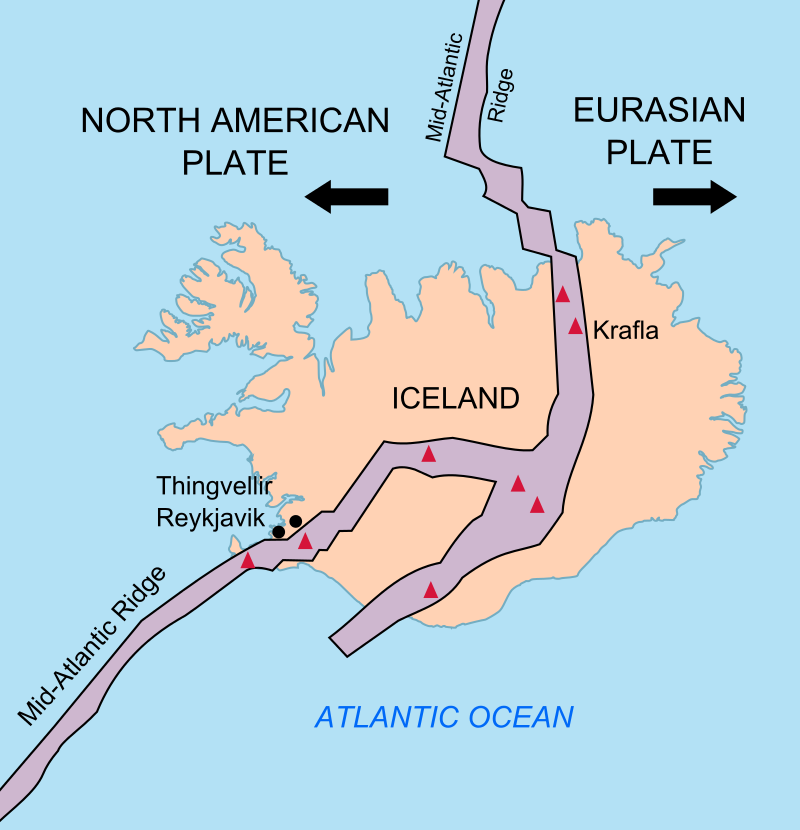
Where to see Tectonic plates in Iceland?
The Mid-Atlantic ridge cuts diagonally through Iceland from the Southwest to the Northeast of the country. It makes landfall just south of Reykavik Iceland and exits north of Krafla volcano, near Husavik. If you’re visiting Iceland and doing a self-drive roadtrip with a rental car there are three main places you can see the tectonic plates in Iceland.
1. Þingvellir National Park
Thingvellir National Park is a UNESCO World Heritage site located about 40 km east of Reykjavik. It is one of the few places on Earth where you can see the Mid-Atlantic Ridge above sea level, where Eurasian and North american plates meet with the clear plate boundaries views. Visitors can hike the Almannagjá gorge, a rift valley where you can literally walk between the continental plates. You may have seen this rift before, as it was featured in Game of Thrones.
There is also a beautiful waterfall in the gorge. Thingvellir National Park is open 24/7 and free to visit. You can also see the site of Alþingi, the supreme national parliament of Iceland that was established 10,000 years ago in the National Park.
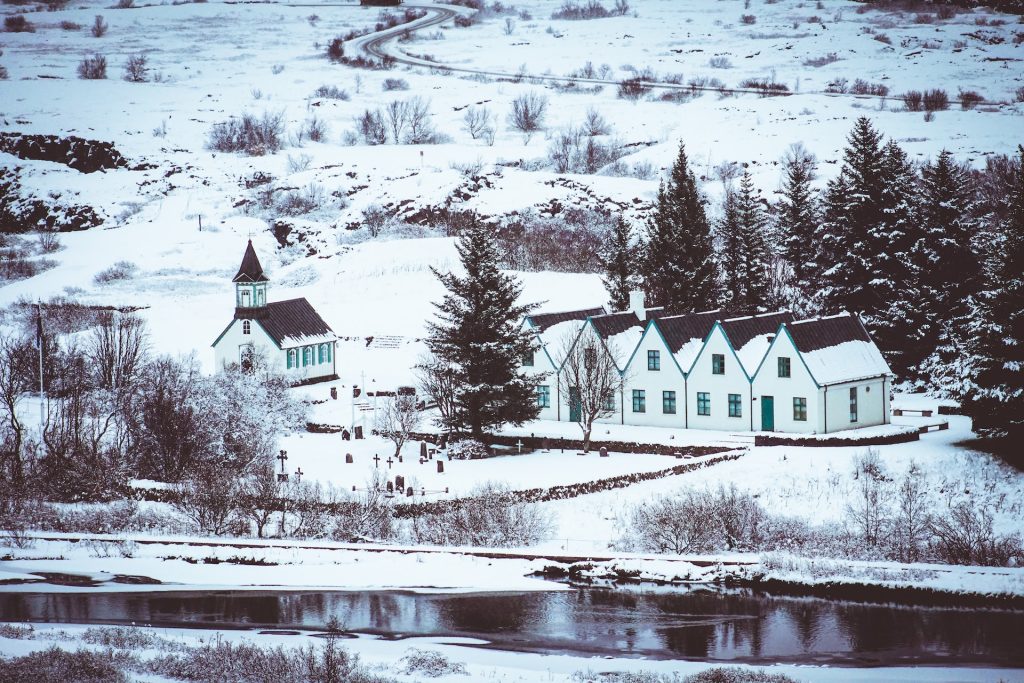
You’ll just need to pay a small parking fee of 500 ISK ($5 USD) to park in one of the parking lots. There are many pathways to hike through the park, but we’d recommend allocating between 30 minutes to an hour just for the Almannagjá gorge itself.
Alternatively, visitors can experience the tectonic plates underwater, at the Silfra fissure. The dive site is located within Thingvellir and is the only place in the world where you can snorkel or dive in the crack between the plates. The water in the fissure comes directly from the glaciers, meaning it’s incredibly pure and clear.
Underwater visibility is over 100 meters, although no divers go that deep. As you can imagine, the water is very cold (around 2°C) which is why all divers are required to wear a drysuit. You will have to have your drysuit diver certification in order to join a dive at Silfra, but anyone can snorkel as long as they are over 14 years old.
But regardless, you should prepare to feel a bit cold on your face and hands, at least until you become adjusted to the temperature. Swimming between the two tectonic plates is a once-in-a-lifetime experience that you won’t get anywhere else in the world and one of the best things to do in Iceland.
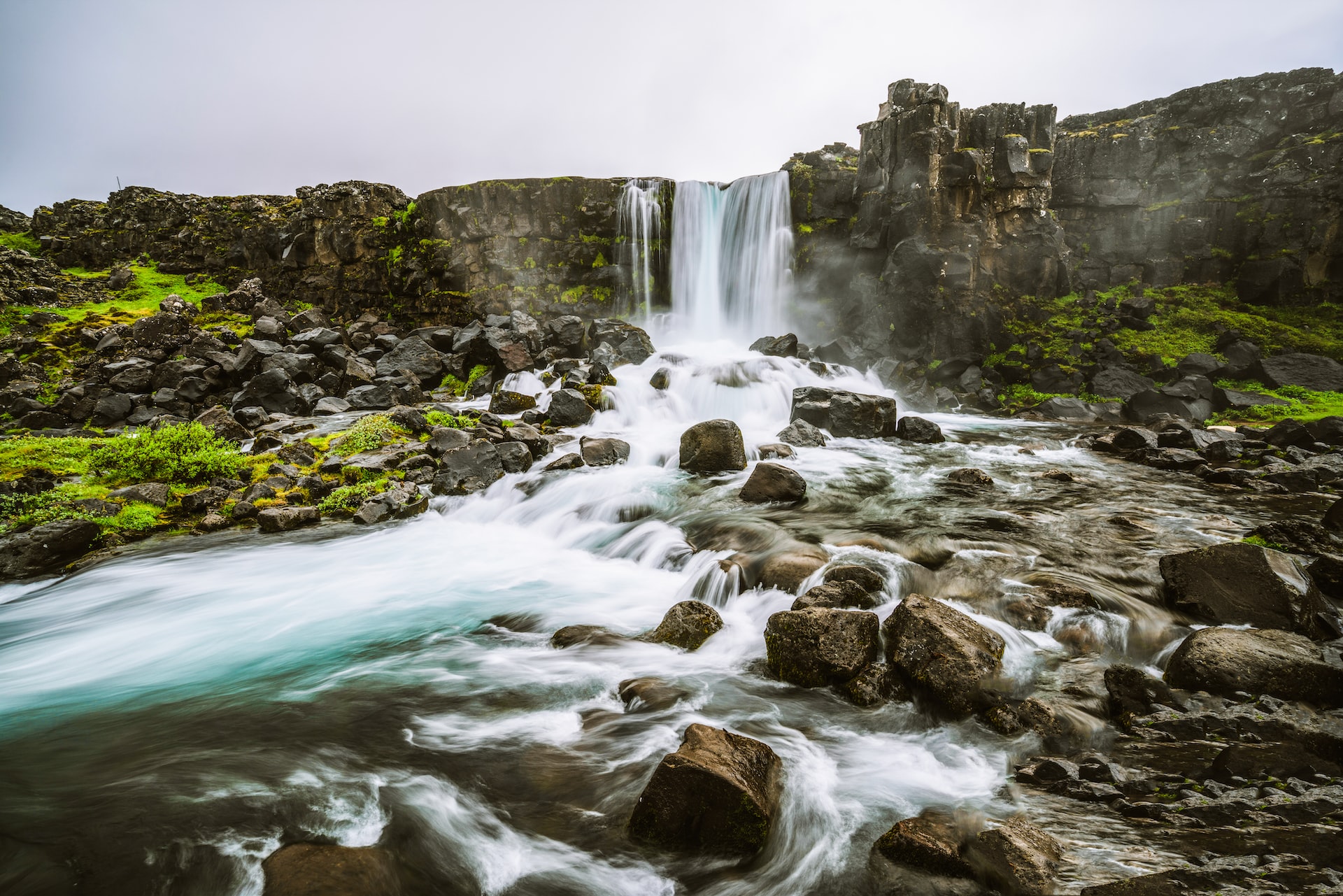
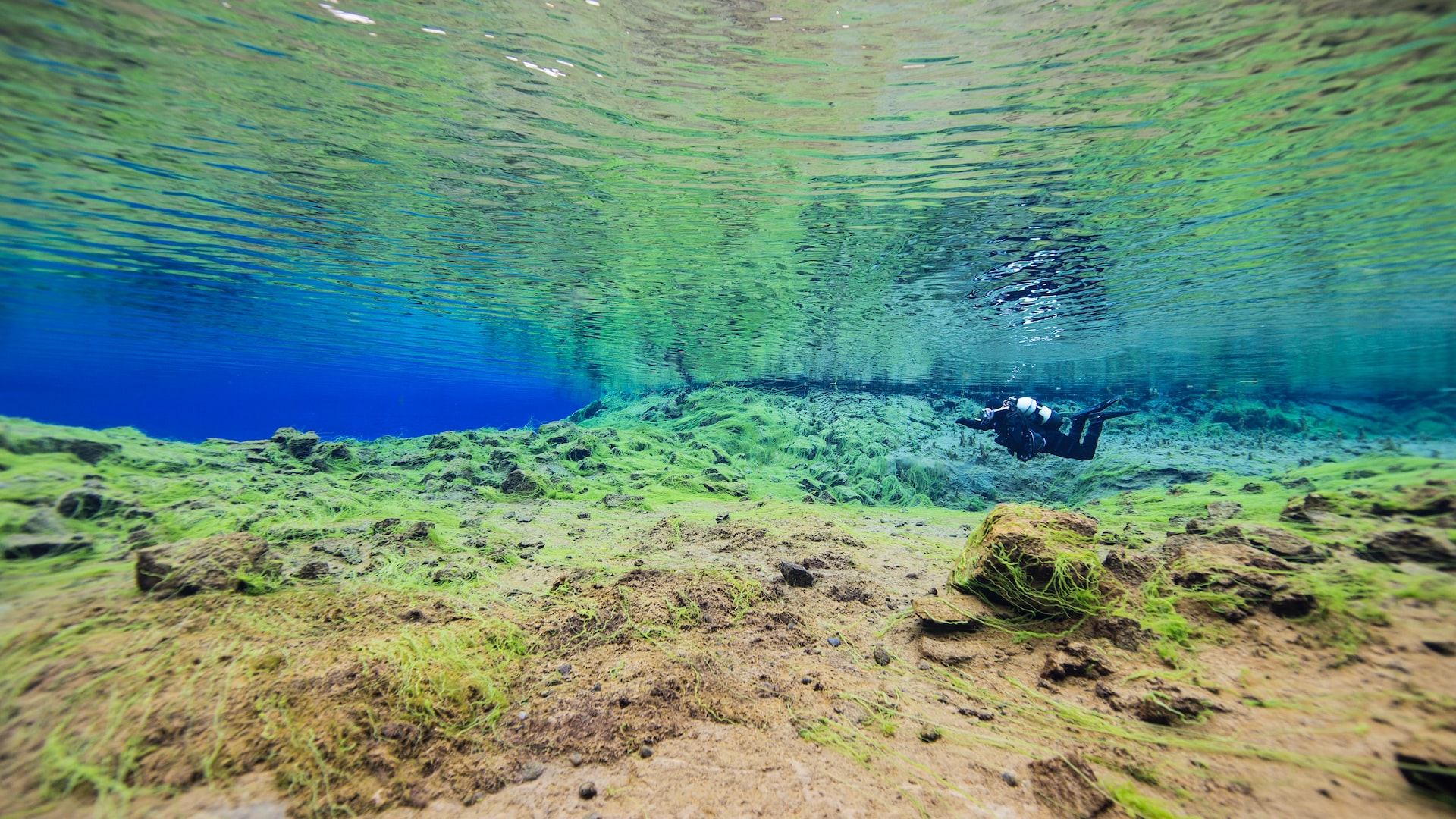
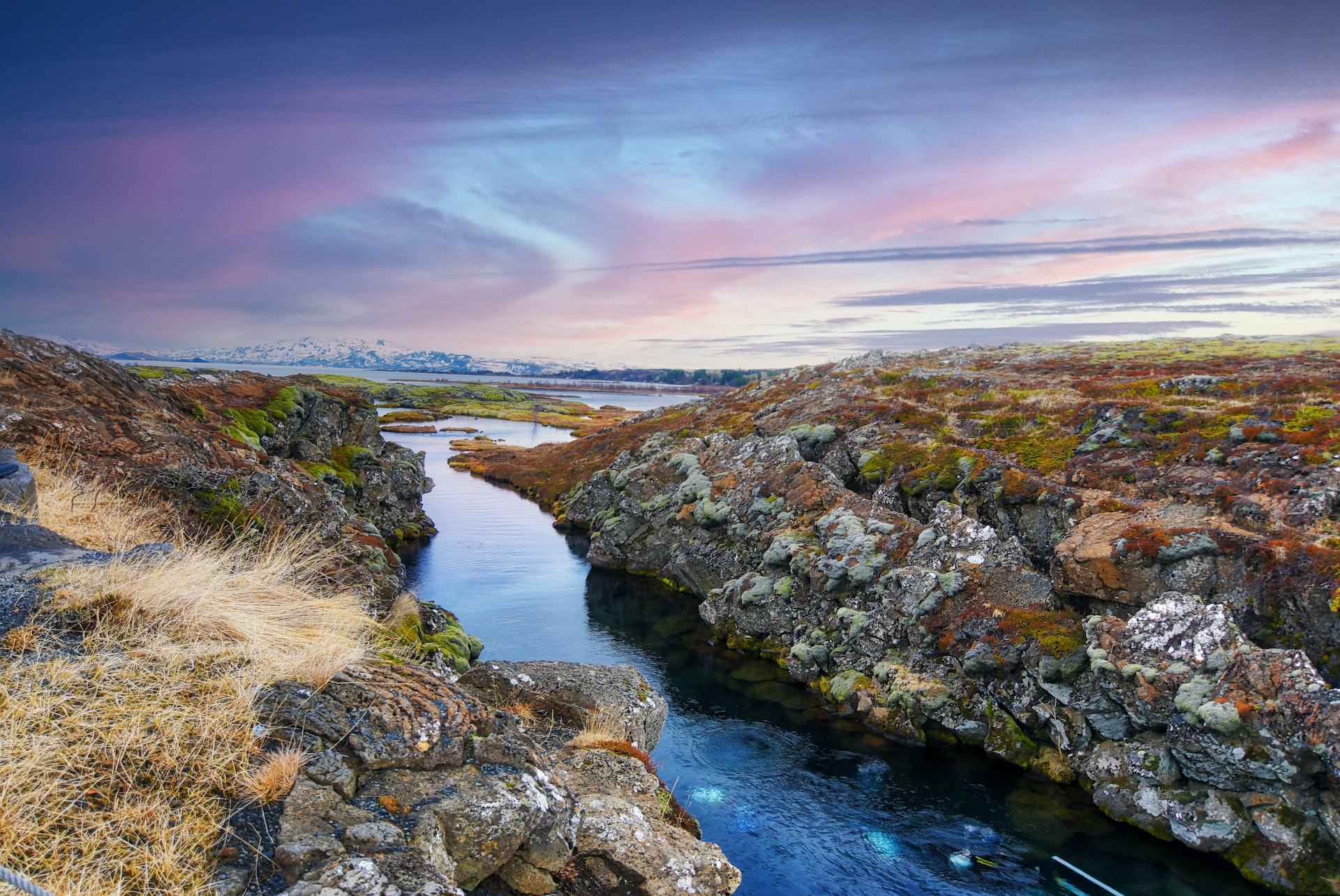
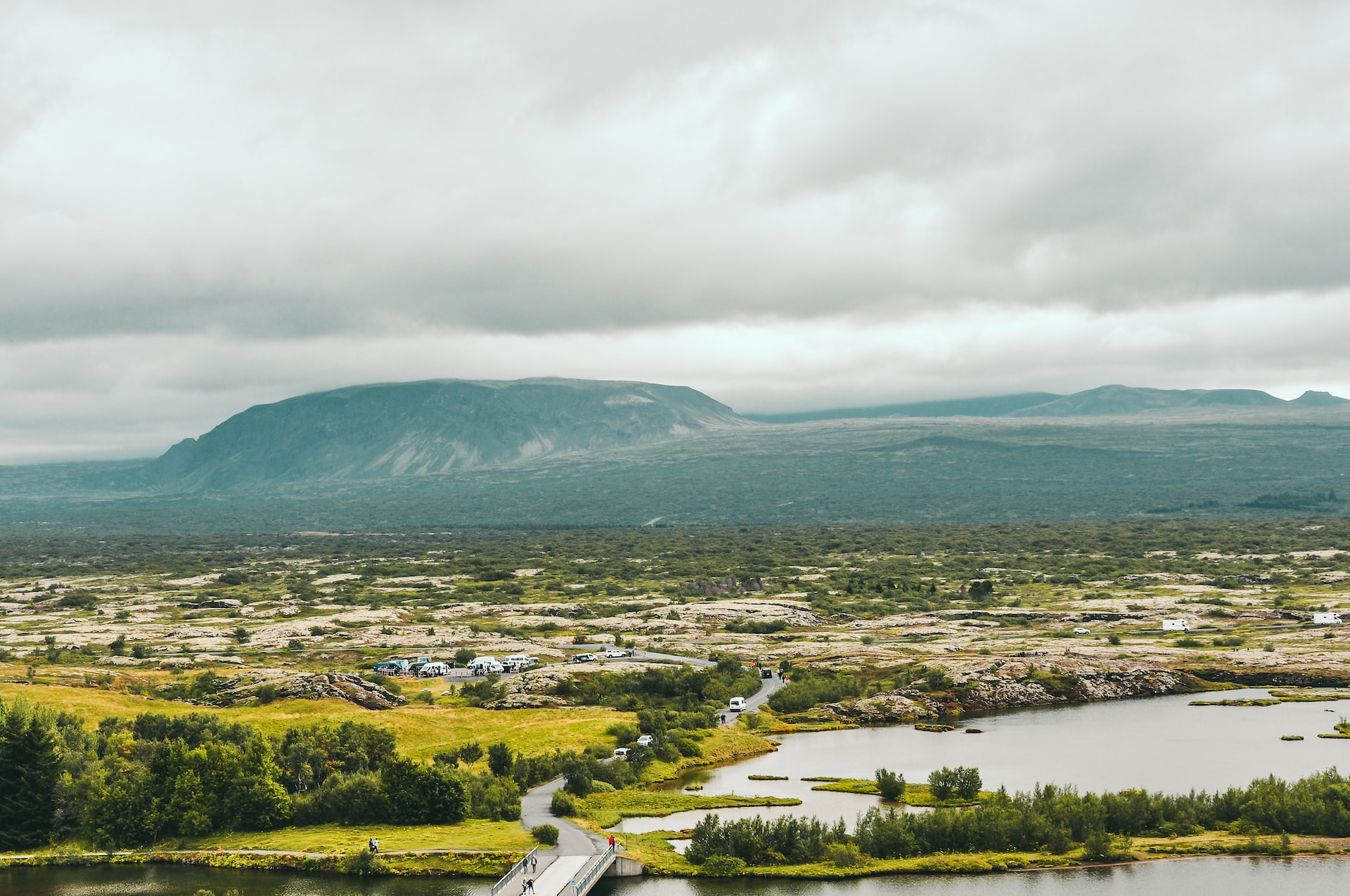
2. Reykjanes Peninsula
The Reykjanes Peninsula is located southwest of Reykjavik and is home to several geothermal areas and volcanic landscapes. The peninsula is also situated on the Mid-Atlantic Ridge and is a great place to witness the movement of the tectonic plates.
One of the most popular spots to see the plates is at the Bridge Between Continents, a small footbridge that spans a fissure between the North American and Eurasian plates. This bridge is also called Leif the Lucky’s Bridge, and after crossing, you can head to the Reykjanes Information Center and pick up a personalized certificate to commemorate the experience. It’s a really cool and unique souvenir that you can take home with you.
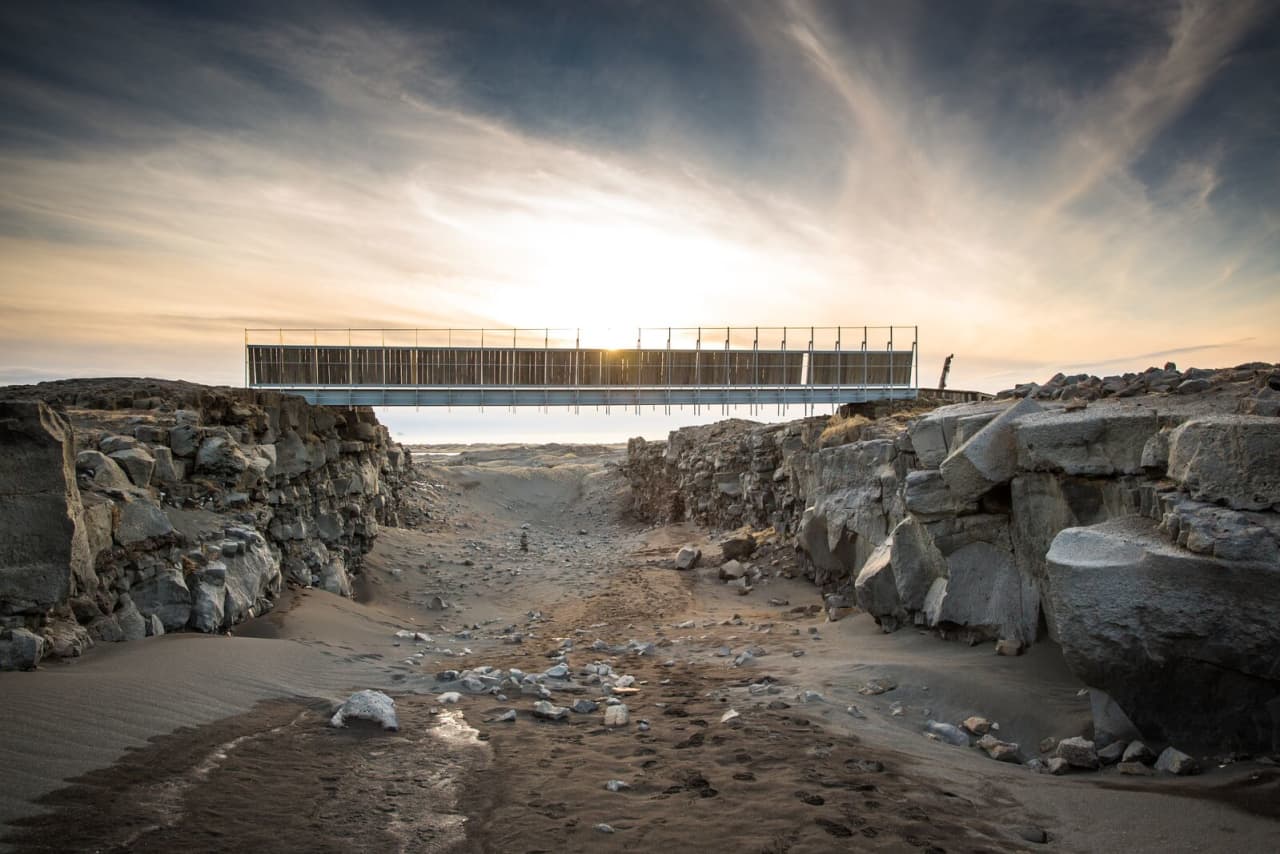
3. Vatnajökull Glacier
Vatnajökull is the largest glacier in Iceland and covers around 8% of the country. The glacier sits on top of the Grimsvotn volcano, which is located on the Mid-Atlantic Ridge. Visitors can take guided tours of the glacier and see firsthand the impact of the tectonic movements on the landscape. In some areas, you can walk on Iceland black sand beaches that were created by volcanic activity under the glacier.
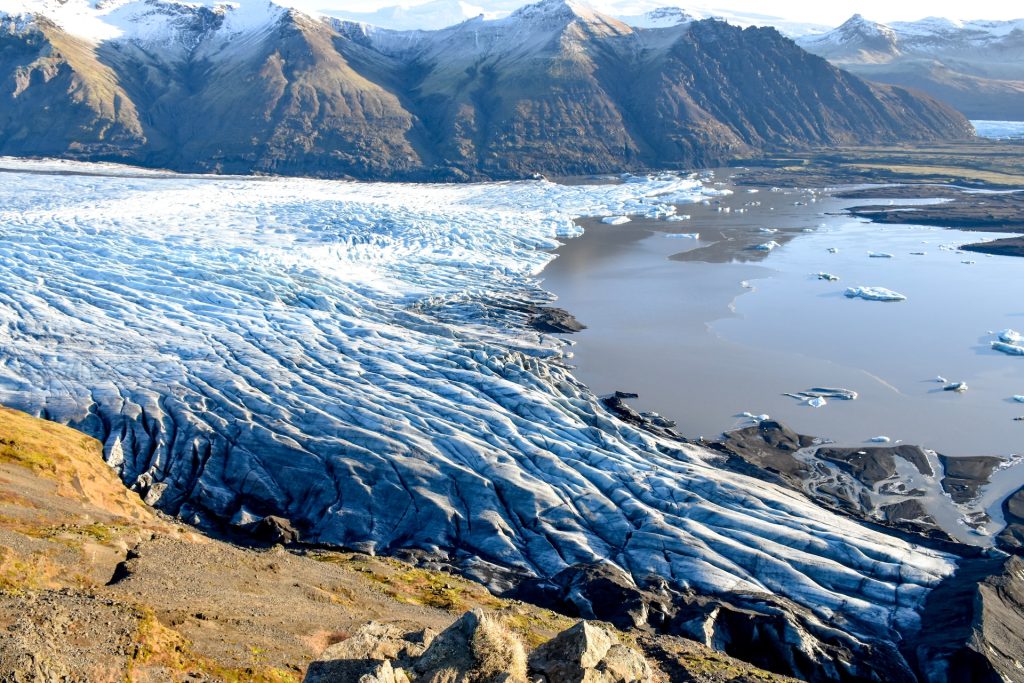
Safe travel tips to see the tectonic plate in Iceland
There are some things to keep in mind that will keep you safe and comfortable during your visit to the tectonic plates in Iceland.
- You must book a tour in advance for any of the activities in Silfra (diving/snorkelling)
- Rent the proper car for your trip, and book in advance. Find tons of Iceland car rental tips here.
- Be prepared for your trip by planning out your itinerary. The tectonic plates can be visited when driving the Golden Circle in Iceland, or Iceland’s Ring Road.
- Always be aware of the weather in Iceland. It can change very rapidly, and storms can be common, especially during the winter months.
- NEVER try to cross the safety line that’s in place at the attractions. The lines have been strategically put there for the safety of all visitors, so make sure to respect those rules.
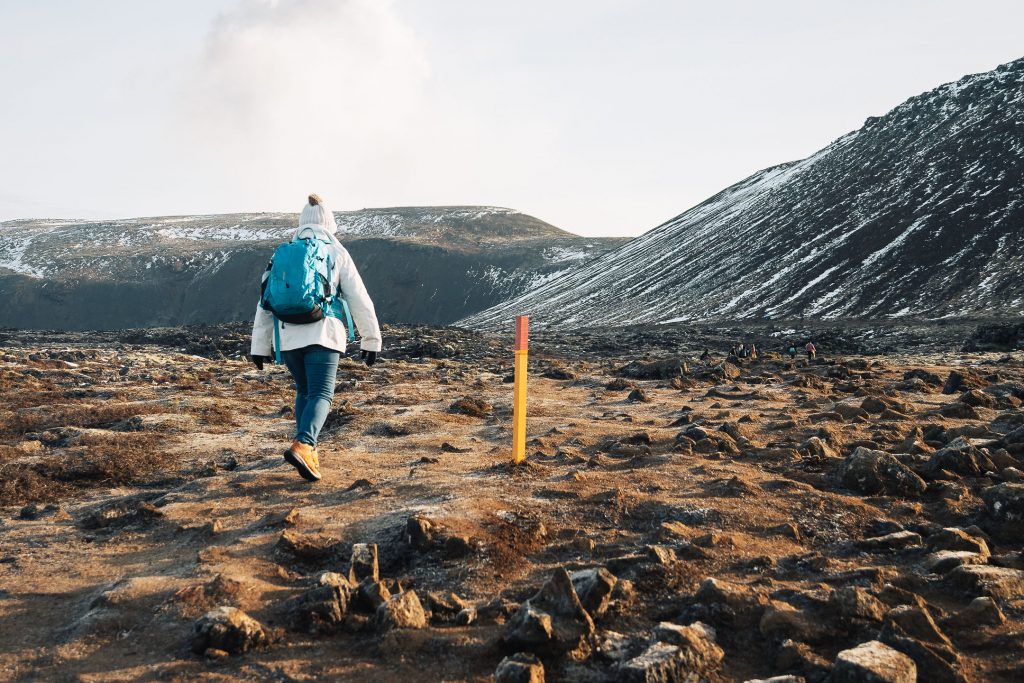
Iceland geology travel guide
Iceland’s unique geography is a result of its location on the Mid-Atlantic Ridge, where the North American and Eurasian tectonic plates meet and diverge. Although Iceland straddles both continents, it is considered part of Europe politically, culturally, and historically.
The tension created by the movement of these tectonic plates leads to frequent earthquakes and volcanic activity, which has resulted in the formation of Iceland’s stunning landscapes, including mountains, lava fields, and geothermal areas.
This is the only place in the world where visitors can see the effects of plate tectonics above ground in Iceland, making it a must-visit destination for geology enthusiasts and travellers seeking an unforgettable experience. The best way to get to the viewing points of the tectonic plates and all of Iceland’s top attractions is via rental car. Make sure you book your rental car online and in advance with Hertz Iceland to ensure you get the perfect Iceland rental car option for your group.
